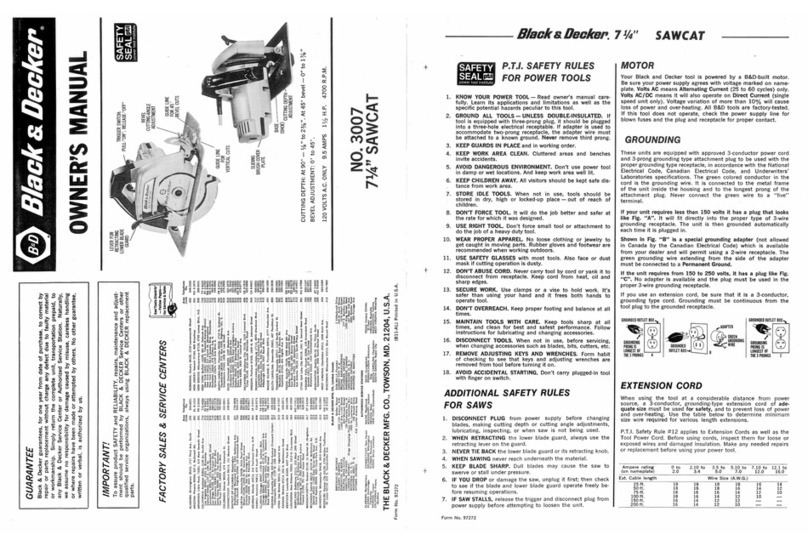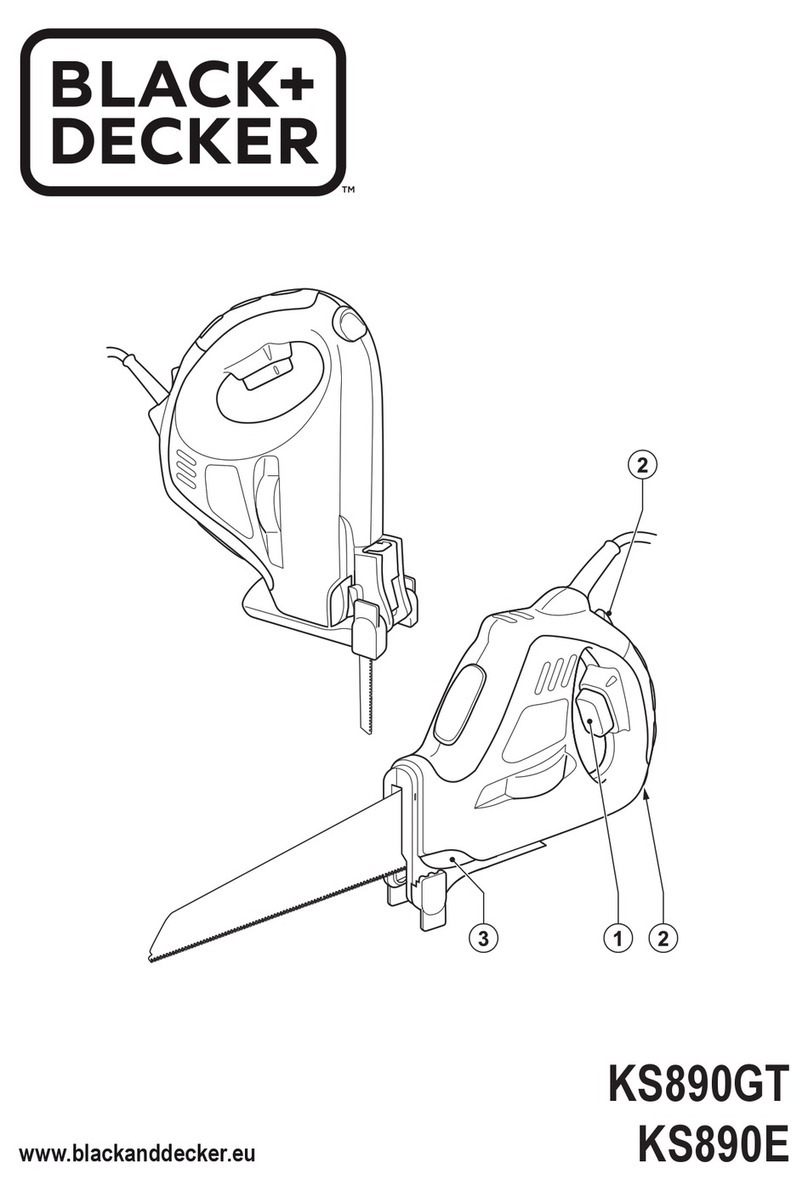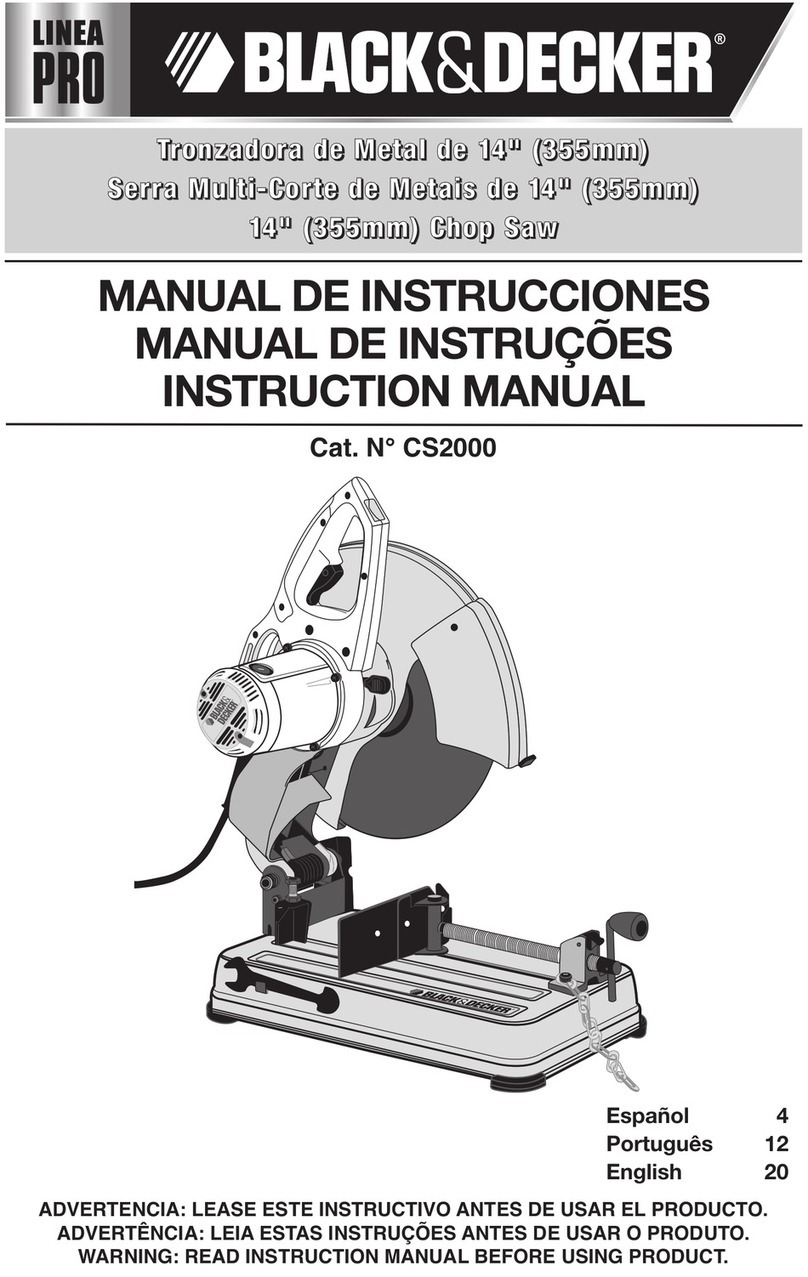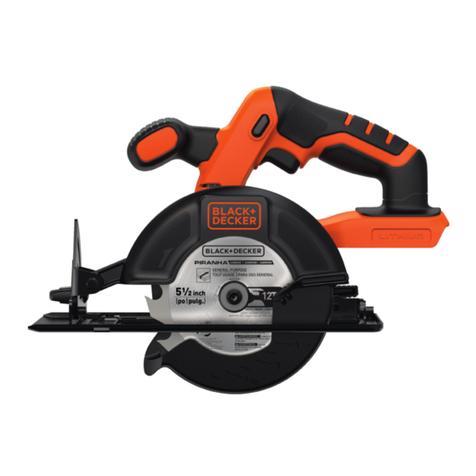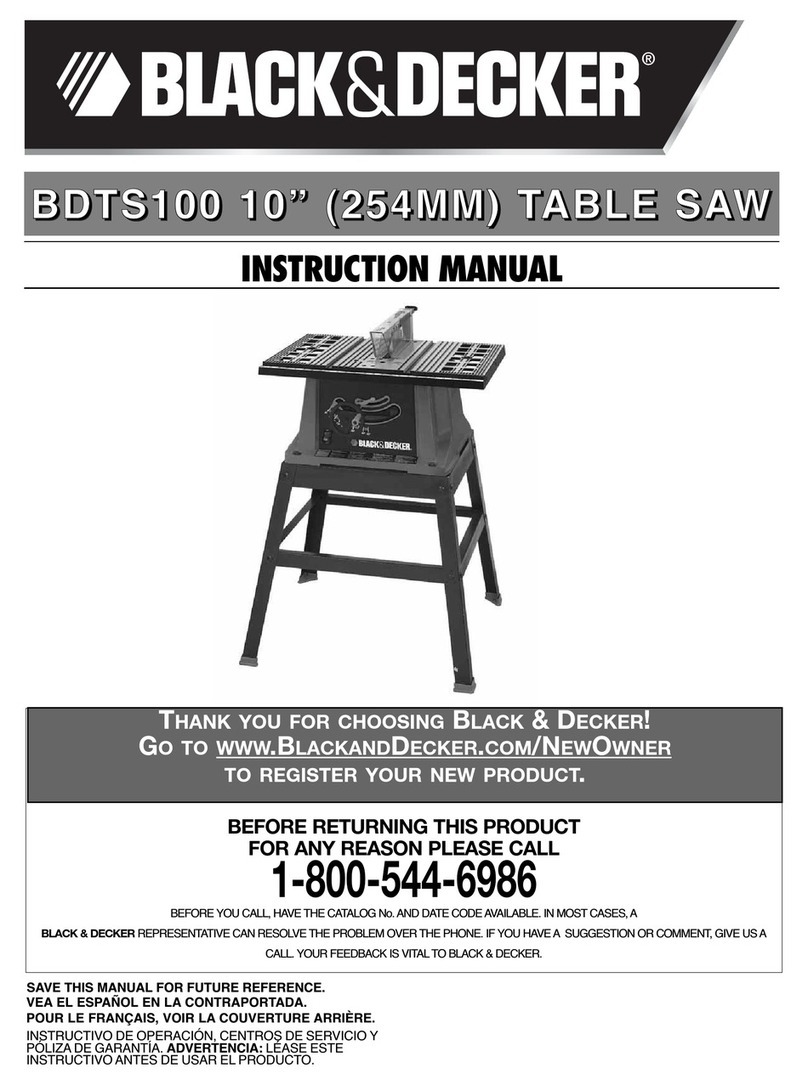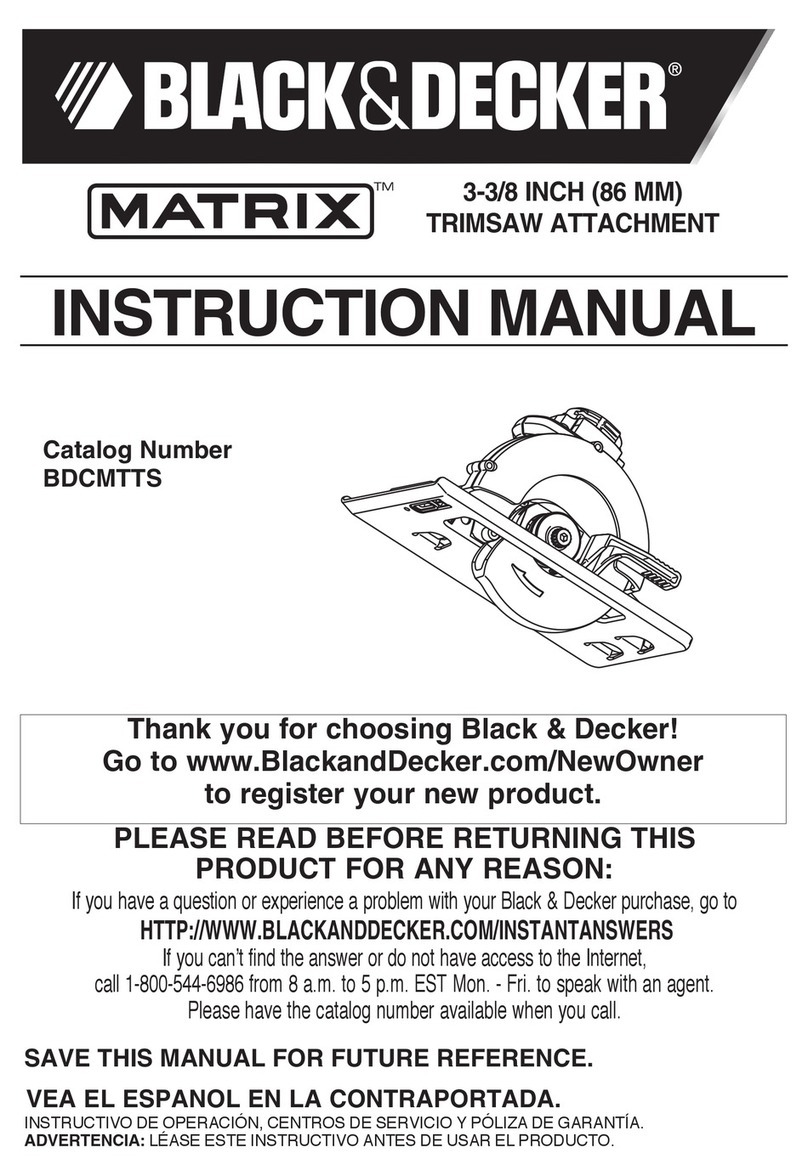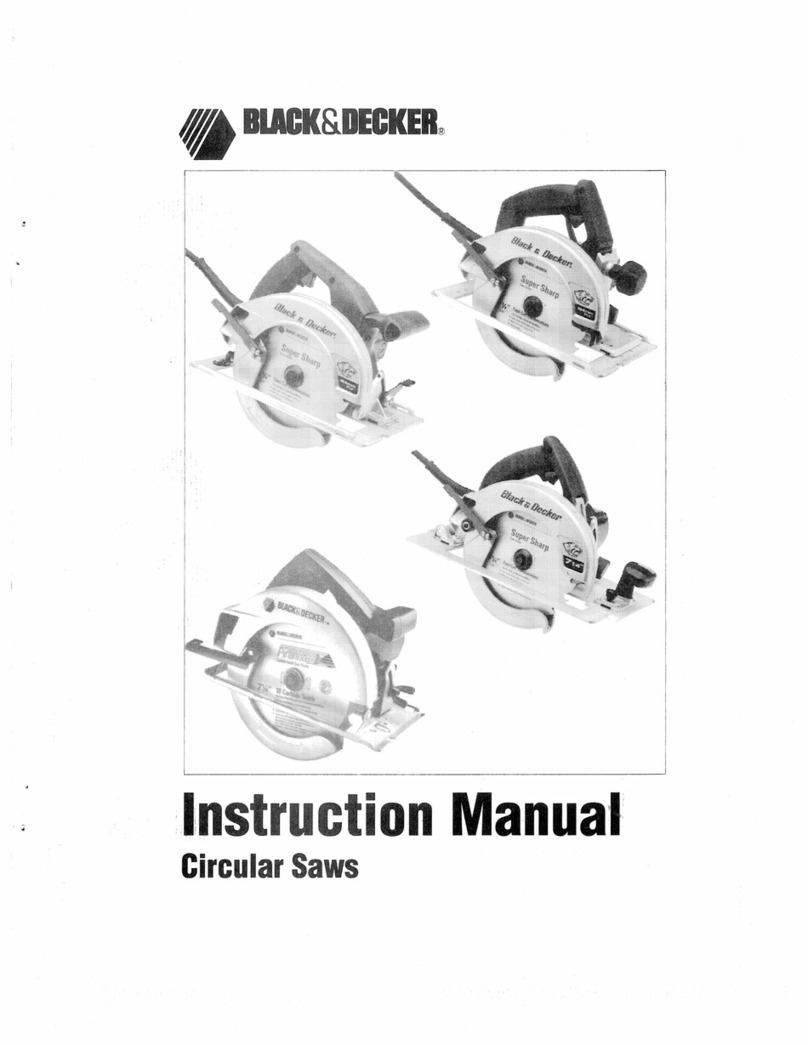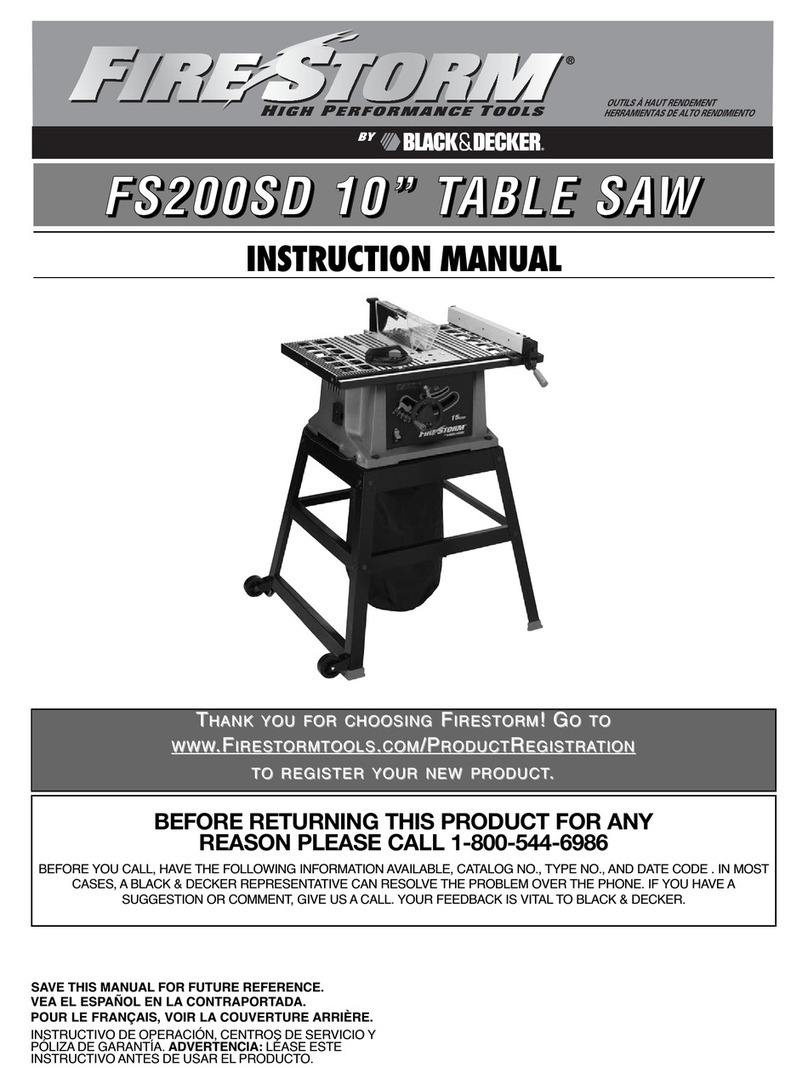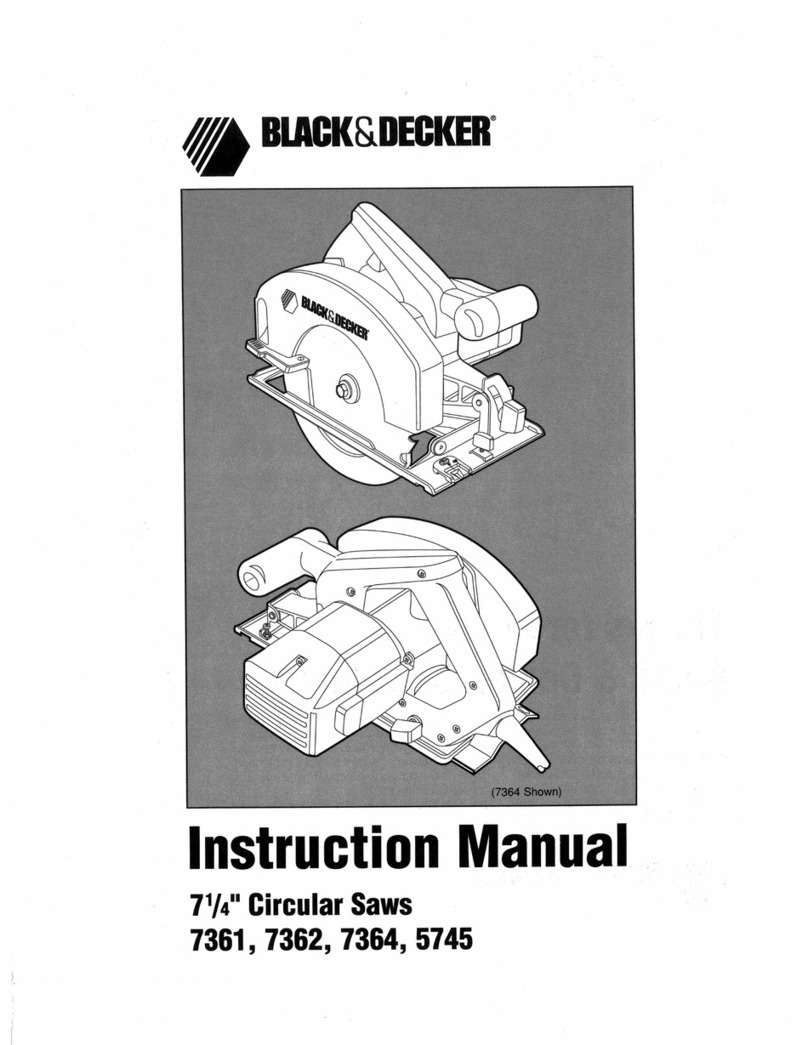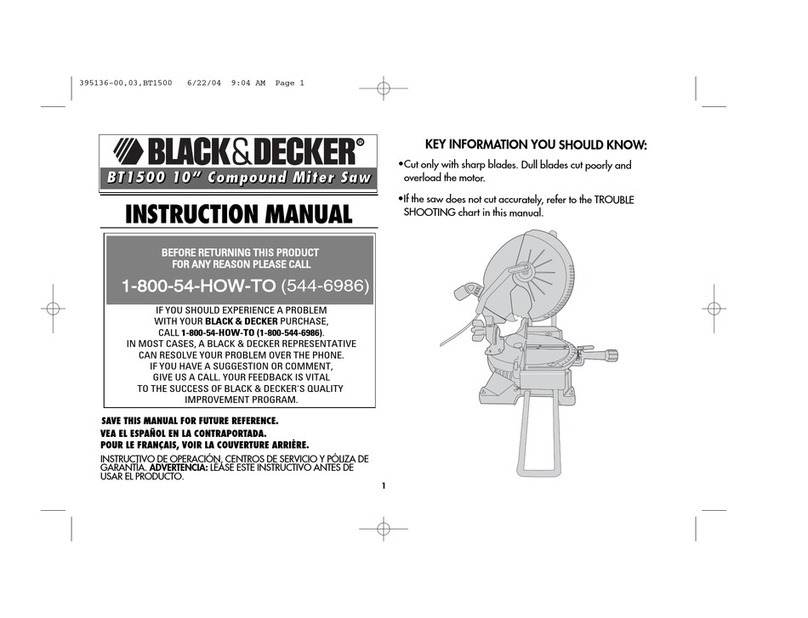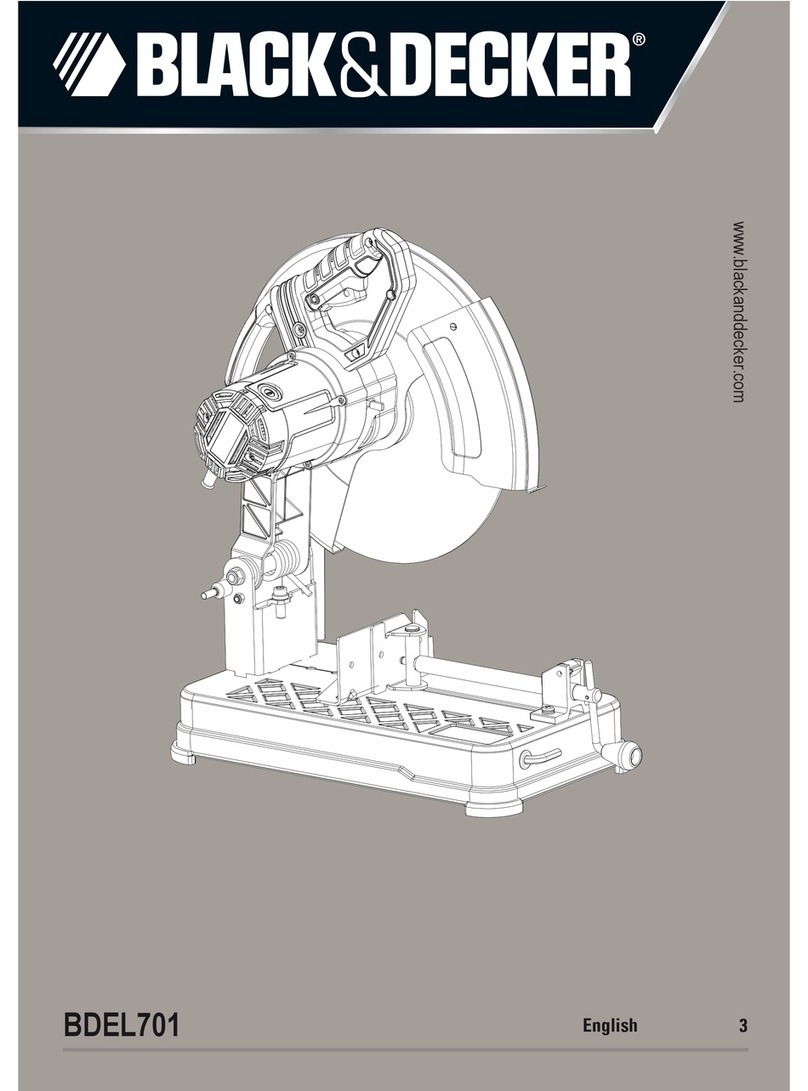
9
ENGLISH
(Original instructions)
rmworksurfacebeforeuse. A level and rm work sur-
face reduces the risk of the mitre saw becoming unstable.
uPlan your work. Every time you change the bevel or
mitre angle setting, make sure the adjustable fence is
set correctly to support the workpiece and will not
interfere with the blade or the guarding system. With-
out turning the tool “ON” and with no workpiece on the
table, move the saw blade through a complete simulated
cut to assure there will be no interference or danger of
cutting the fence.
uProvideadequatesupportsuchastableextensions,
saw horses, etc. for a workpiece that is wider or
longer than the table top. Workpieces longer or wider
than the mitre saw table can tip if not securely supported.
If the cut-off piece or workpiece tips, it can lift the lower
guard or be thrown by the spinning blade.
uDo not use another person as a substitute for a table
extension or as additional support. Unstable support
for the workpiece can cause the blade to bind or the
workpiece to shift during the cutting operation pulling you
and the helper into the spinning blade.
uThe cut-off piece must not be jammed or pressed by
any means against the spinning saw blade.
If conned, i.e. using length stops, the cut-off piece could
get wedged against the blade and thrown violently.
uAlwaysuseaclamporaxturedesignedtoproperly
support round material such as rods or tubing. Rods
have a tendency to roll while being cut, causing the blade
to “bite” and pull the work with your hand into the blade.
uLet the blade reach full speed before contacting the
workpiece. This will reduce the risk of the workpiece
being thrown.
uIf the workpiece or blade becomes jammed, turn the
mitre saw off. Wait for all moving parts to stop and
disconnect the plug from the power source and/or re-
move the battery pack. Then work to free the jammed
material. Continued sawing with a jammed workpiece
could cause loss of control or damage to the mitre saw.
uAfternishingthecut,releasetheswitch,holdthe
saw head down and wait for the blade to stop before
removing the cut-off piece. Reaching with your hand
near the coasting blade is dangerous.
uHoldthehandlermlywhenmakinganincompletecut
or when releasing the switch before the saw head is
completely in the down position. The braking action of
the saw may cause the saw head to be suddenly pulled
downward, causing a risk of injury.
uThe intended use is described in this instruction manual.
The use of any accessory or attachment or performance
of any operation with this tool other than those recom-
mended in this instruction manual may present a risk of
personal injury and/or damage to property.
uAvoid uncontrolled release of the tool or handle from the
fully down position.
uDo not use cracked/bent/damaged/deformed saw blades.
uReplace the kerf plate when worn.
Kerf plate replacement
To replace the kerf plates, loosen the screws holding the kerf
plates in place. Adjust so that the kerf plates are as close as
possible without interfering with the blade’s movement.
uDo not use blades of larger or smaller diameter than
recommended. For the proper blade rating refer to the
technical data. Use only the blades specied in this
manual, complying with EN 847-1.
uDo not use High Speed Steel (HSS) saw blades.
@Warning! Contact with or inhalation of dusts
arising from sawing applications may endanger
the health of the operator and possible bystanders. Wear a
dust mask specically designed for protection against dust
and fumes and ensure that persons within or entering the
work area are also protected.
uDo not work with material containing asbestos. Asbestos
is considered to be carcinogenic.
uWear gloves when handling saw blades and rough
material (saw blades should be carried in a holder when
practicable).
uWear hearing protection to reduce the risk of induced
hearing loss.
uConsider using specially designed noise-reduction blades.
uWear eye protection to reduce the risk of personal injury.
uUse the dust bag provided when sawing wood.
uHold power tool by insulated gripping surfaces when
performing an operation where the cutting accessory
may contact hidden wiring or its own cord.
Cutting accessory contacting a "live" wire may make
exposed metal parts of the power tool "live" and could give
the operator an electric shock
uSelect the correct blade for the material to be cut.
uDo not operate the machine without the guard in position.
Do not operate the machine if the guard does not function
or is not maintained properly.
uEnsure that the arm is securely xed when performing
bevel cuts.
uBefore each cut ensure that the machine is stable.
uKeep handles dry, clean and free from oil and grease.
uKeep the surrounding area of the machine well maintained
and free of loose materials, e.g. chips and off-cuts.
uEnsure the machine and the work area are provided with
adequate general or localised lighting.
uDo not allow untrained people to operate this machine.
uEnsure that the blade is mounted correctly before use.
Make sure that the blade rotates in the correct direction.
Keep the blade sharp. Follow instruction for lubricating
and changing accessories.
